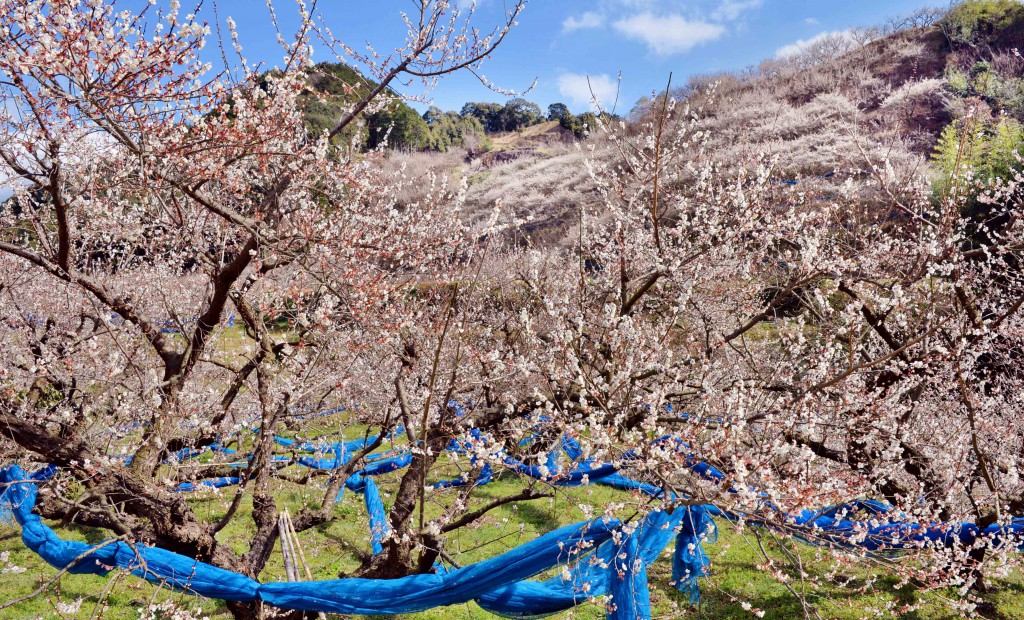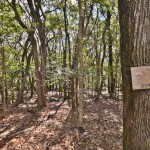
Ume apricot flowers in full bloom. During harvesting season, the blue nets under the branches will be unfolded to catch the windfalls. (in Tanabe-shi, Wakayama Prefecture)
Ume Japanese apricot flowers are now in full bloom in Minabe-Tanabe ume orchard district for the first time after the ume production system in the region was added to the list of Globally Important Agricultural Heritage Systems (GIAHS) of the United Nations Food and Agriculture Organization (FAO) in December 2015. Thanks to this winter’s warmer weather, the flowers have reached full bloom a week earlier than last year at the Minabe Bairin Ume Orchard and the Kishu Ishigami Tanabe Bairin Ume Orchard run by local farmers.

Ume orchards and coppices are closely linked to each other in this ecosystem. (in Tanabe-shi, Wakayama Prefecture)
Kishu Ishigami Tanabe Bairin has approximately 30,000 Japanese apricot trees on the hill. There are walking trails inside the orchard with a lookout that offers magnificent view of blooming flowers.
The FAO has recognized the whole ume production system ofthe district including not only the ume orchards but also their surrounding areas and communities as “Minabe-Tanabe Ume Production System” for the uniqueness that hassustainably produced high-quality ume on rudaceous and nutrient-poor slopes. The coppices surrounding the orchards are part of the ume production system as they store water in the soil and prevent landslide. Japanese honeybees inhabiting in the surrounding area help pollinate the ume trees.

Ume udon noodle is the most popular dish at a local restaurant in Kishu Ishigami Tanabe Bairin Ume Orchard. (in Tanabe-shi, Wakayama Prefecture)
Both the government and local ume producers hope that the recognition as an agricultural heritage will help promote the ume consumption.
Unusual local ordinances have been created to boost the ume consumption, too. In 2013, Tanabe-shi established an ordinance urging its residents to raise a toast with umeshu Japanese apricot liqueur. Also in 2014, Minabe-cho passed a law to promote the use of umeboshi pickled Japanese apricot for rice ball filling.
(Feb. 21, 2016)


